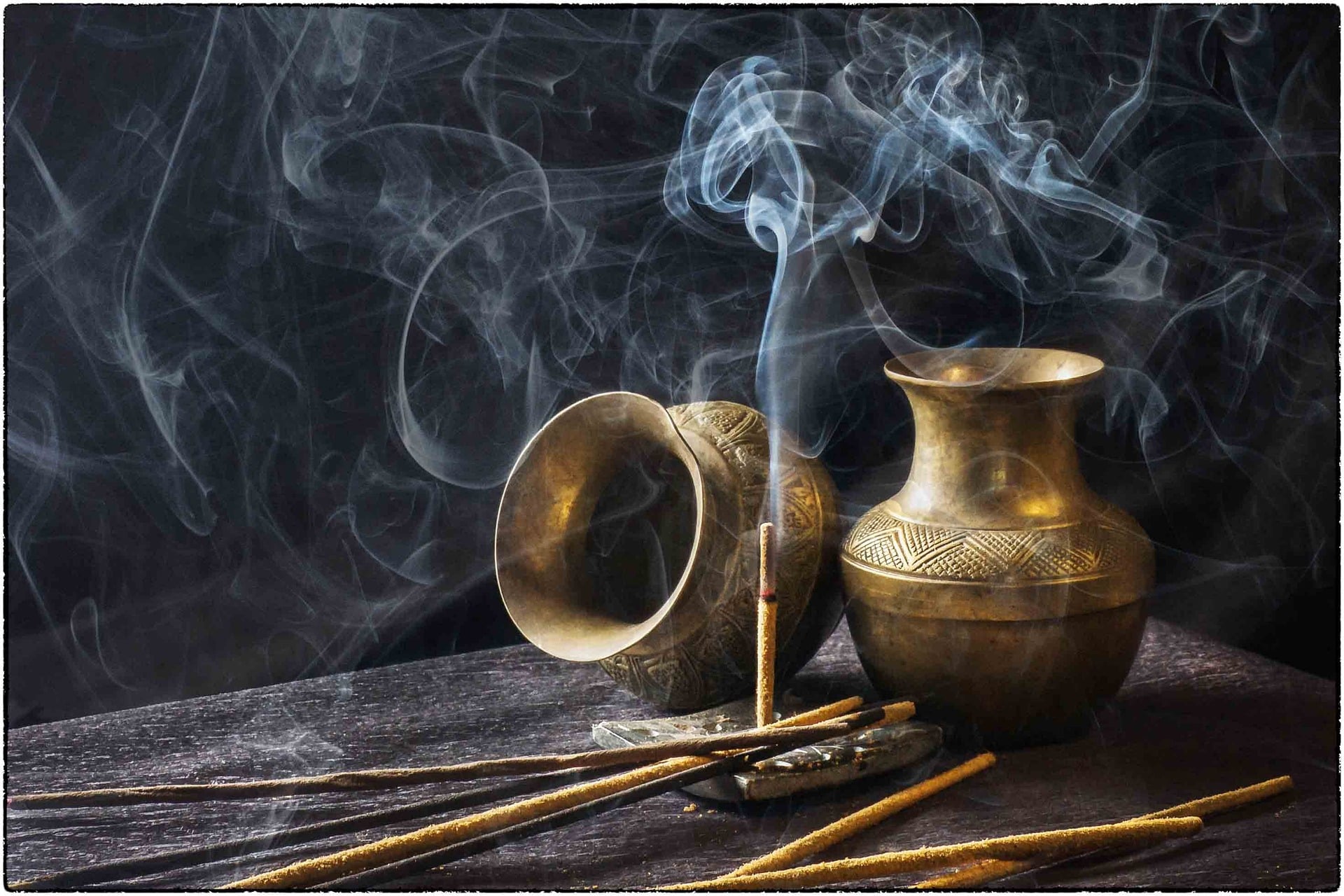
If you wonder "What is Boswellia serrata for?" You are in the right place. In phytotherapy, the Boswellia serrata It is especially indicated for the treatment of osteoarthritis and inflammatory pathologies (for example, rheumatoid arthritis, Crohn's disease, ulcerative colitis).
boswellia (Salai guggal) It is a medium-sized tree belonging to the Burseraceae family and native to the hilly areas of India.
What is Bowsellia Serrata?
Name Boswellia It is a name attributed by the English botanist Roxburgh to a genus of plants that includes numerous species, some of which have been very famous since ancient times, as they supply the aromatic resins known as incense. Roxburgh lived in the XNUMXth century.
The genus Boswellia belongs to the family Burseraceae, which includes about 700 species of tropical tree plants. All these plants are endowed with numerous resinous canals from which, along the incisions that man makes in the trunk of some species, a milky white resinous juice exudes. This juice slowly solidifies in the air and forms granules that form the incense u frankincense.
This term (olibanum) derives from the Arabic "al-lubàn", which means white, and it is believed that it refers precisely to the appearance of the milky substance that is extracted from the bark of these trees. While the term incense derives from the archaic Latin “incensum = lit-fiery”, since in ancient times it was already used to burn it for ritual fumigations.
Where does it come from?
In popular tradition, Boswellia oleoresin has been used for centuries both as aromatic incense for religious ceremonies as medicinal. The resin is collected by incision of the trunk and then classified according to organoleptic characteristics (for example, taste, color, size, shape). The world's leading producers of Boswellia resin are the Indian states of Andhra Pradesh, Madhya Pradesh, Gujarat, Chhattisgarh, and Jharkhand. But also those of eastern Africa, along the Red Sea coasts, in Somalia, Abyssinia and Ethiopia, in southern Arabia, particularly Oman and Yemen, and in Pakistan.
What species stand out for their properties?
The most important species of Bowsellia are B.Carterii, B.bhaw-dajiana, B. papyrifera, B. sacral y Boswellia serrata. It is the latter that we will talk about today. Locally they have their own denominations, among which we remember the name of Luban, in Arabia and in Bengal; Kundur in Persia; Payana in Malabar and Guggal in India, names that often refer to the quality of incense obtained from them. The richness in resins can assume a considerable economic importance in the mentioned species, which can become the object of particular agricultural crops, in some tropical and subtropical countries, even outside the areas of origin.

Frankincense and other resinous substances
Frankincense can also be defined as pure or true incense, to distinguish it from other balsamic resinous substances that in ancient times were burned for ritual or hygienic purposes, such as myrrh, benzoin, galbanum, styrax.
The use of these aromatic resins for healing purposes, for environmental disinfectant fumigation, or for pagan cults in the Mediterranean and Mesopotamian area was known since ancient times, until it became the symbol of the offering in all ceremonial forms of religious worship. used for devotional and ritual, sacred and liturgical purposes, as is still the case today in the Christian and Greek-Orthodox religions. In traditional Indian Ayurvedic medicine, frankincense, by the name of Salai Guggal, is used for various ailments, with a fairly wide range of uses.
What is the Bowsellia serrata plant like?
The resinous exudate obtained from Boswellia serrata (synonyms B. glabrous y B. thurifera) is the one that is believed to have the most medicinal properties, which is why it is the subject of this article.
Originally from India and Pakistan, the Boswellia serrata It is a medium-sized tree that does not usually exceed 4-6 meters in height, with a wide crown and a large and highly branched trunk, with ash-colored bark that flakes into thin paper.
This species prefers calcareous soils, but is very resistant to drought and frost and tolerates extreme situations: it also grows on rocky slopes, suspended over ravines, and can be found up to 1200 meters above sea level.
The large compound leaves are deciduous: the plant goes into rest in the hottest and driest period, losing its leaves and suspending its vital functions, which is why it is said to go into "estivation". The small cream-white scented flowers are gathered in grouped inflorescences called racemes; the fruit is a small trigonal drupe containing three heart-shaped seeds.
What makes Bowsellia serrata so important to medicine?
The rubbery fraction of the exudate is equal to 23%, it is soluble in water and it is constituted mainly by polysaccharides. The resinous content reaches 55% and is composed of a mixture of boswellic acids. The oil is made up of essential oils. All of these elements combine to give the drug its medicinal characteristics, the intense fragrance that it gives off when burned, and its medicinal properties.
From a chemical point of view, oleoresin is composed of about 50% boswellic acids (β-boswellic acid, acetyl-β-boswellic acid, 11-keto-β-boswellic acid, acetyl-11-keto-β-boswellic acid), around 15% essential oils and the rest of polysaccharides (arabinose, galactose, xylose). boswellic acids (particularly acetyl-11-keto-β-boswellic acid) are potent 5-lipoxygenase inhibitors. By blocking the enzyme 5-lipoxygenase, a strong anti-inflammatory effect by reducing the synthesis of leukotrienes (substances involved in systemic and asthmatic inflammatory reactions).
The pharmacological activity of Boswellia serrata has been the subject of numerous scientific studies in recent decades. Various clinical tests have shown that Boswellia serrata is suitable, above all, for the treatment of diseases that present with inflammation such as osteoarthritis, since it prevents the degradation of glycosaminoglycans and this is reflected by a strong local anti-inflammatory effect.
Pang X et al. demonstrated that acetyl-11-keto-β-boswellic acid inhibits endothelial growth factor and may be useful for the treatment of prostate cancer.
Summary of the anti-inflammatory process
Briefly summarizing the mechanism of action, Boswellia serrata is thought to work by selectively inhibiting one enzyme, lipoxygenase, thus preventing the synthesis of leukotrienes, that is, the chemical mediators that induce the inflammatory process, both acute and chronic in various forms of inflammatory diseases.
In addition, it appears that boswellic acids block the migration to the site of inflammation of a specific type of white blood cells, which produce elastase, the enzyme proteolytic, in the inflamed area.responsible for the destruction of collagen, and therefore of the tissues involved in the inflammatory process; as it lacks elastase, the integrity of collagen is preserved and the deterioration of joint structures (cartilage, ligaments, tendons) is avoided with a global prevention of joint degeneration.

Other uses that are still under study
Although no scientific studies have yet been carried out on the use of the plant in asthmatic processes, the Boswellia serrata can improve bronchoconstriction. Furthermore, this medicinal plant has a strong antipyretic activity without causing gastro-injurious effects.
Currently, it is used for its recognized expectorant properties, bronchodilators, diaphoretic, but above all anti-inflammatory and analgesic in musculoskeletal disorders and for osteoarticular inflammation.
In phytotherapy, boswellic acids are used both for Inflammatory diseases (eg, osteoarthritis, osteoarthritis, extra-articular rheumatism) and for autoimmune diseases (eg, rheumatoid arthritis).
In dermatology, extracts of Boswellia serrata are used as healing, skin purifiers (antimicrobial effect) and elasticizing (elastase inhibition).
Its use is recommended as an adjuvant in case of local inflammation, problems degenerative joints, decreased morning motor skills, muscle pain, rheumatism, osteoarthritis, soft tissue inflammation such as tendinitis, myositis, fibromyalgia, drop and especially rheumatoid arthritis, both for internal use as an ingredient in ointments and creams to put on sore joints.
It is less aggressive than NSAIDs
A detail that makes the use of Boswellia serrata interesting is that itThe anti-inflammatory action attributed to boswellic acids is not gastro-injurious, like many synthetic anti-inflammatory molecules (NSAIDs). In fact, synthetic anti-inflammatories work by blocking the production of prostaglandins, the substances responsible for pain and inflammation. But, since these substances also have a positive function, such as the secretion of gastric mucus that protects the stomach mucosa, the anti-inflammatory action is accompanied by a marked gastrolesivity (gastritis, ulcer), which is not the case with boswellic acids, which they do not act on the synthesis of prostaglandins.